DeveLoP—A Rationale and Toolbox for Democratic Landscape Planning
Abstract
1. Introduction
2. Democratic Landscape Planning Rationale
2.1. Guidelines for Effective Communications to Foster Spatial Knowledge
2.1.1. Norms
2.1.2. Descriptions
2.1.3. Prescriptions
2.2. Assessment of Vulnerability and Benefit to Foster Territorial Competence
3. The Democratic Landscape Planning Toolbox—DeveLoP
3.1. Survey Instruments
3.1.1. Decision Analysis
- (a)
- Have you decided in favour of mitigation/adaptation to (the impacts of) climate change? (Response options “Yes” and “No”.)
- (b)
- Do you believe in local impacts of climate change? (Response options arranged in a five or seven tier range from “Definitely not”, through “I don’t know”, to “Yes, definitely”.)
- (c)
- Do you believe that you have experienced local impacts of climate change? (Response options arranged in a five or seven tier range from “Definitely not”, through “I don’t know”, to “Yes, definitely”.)
- (d)
- In your opinion, does climate change in your country lead to increasingly positive (negative) impacts on the following value objects? (Response options: “Yes, always”, “Often”, “Rarely”, “No, never” and “I don’t know”.)
3.1.2. Value Elicitation
4. Conclusions
Author Contributions
Funding
Institutional Review Board Statement
Informed Consent Statement
Data Availability Statement
Acknowledgments
Conflicts of Interest
References
- Troll, C. Luftbildplan und ökologische Bodenforschung. Aerial photography and ecological studies of the earth. Z. Der Ges. Für Erdkd. 1939, 7/8, 241–298. [Google Scholar]
- Sayer, J.; Sunderland, T.; Ghazoul, J.; Pfund, J.-L.; Sheil, D.; Meijaard, E.; Venter, M.; Boedhihartono, A.K.; Day, M.; Garcia, C. Ten principles for a landscape approach to reconciling agriculture, conservation, and other competing land uses. Proc. Natl. Acad. Sci. USA 2013, 110, 8349–8356. [Google Scholar] [CrossRef]
- Plieninger, T.; Kizos, T.; Bieling, C.; Le Dû-Blayo, L.; Budniok, M.-A.; Bürgi, M.; Crumley, C.L.; Girod, G.; Howard, P.; Kolen, J.; et al. Exploring ecosystem-change and society through a landscape lens: Recent progress in European landscape research. Ecol. Soc. 2015, 20, 5. [Google Scholar] [CrossRef]
- Reed, J.; van Vianen, J.; Deakin, E.L.; Barlow, J.; Sunderland, T. Integrated landscape approaches to managing social and environmental issues in the tropics: Learning from the past to guide the future. Glob. Chang. Biol. 2016, 22, 2540–2554. [Google Scholar] [CrossRef]
- Arts, B.; Buizer, M.; Horlings, L.; Ingram, V.; van Oosten, C.; Opdam, P. Landscape approaches: A state-of-the-art review. Annu. Rev. Environ. Resour. 2017, 42, 439–463. [Google Scholar] [CrossRef]
- Robinson, G.M.; Carson, D.A. Applying landscape science to natural resource management. Ecol. Soc. 2013, 18, 32. [Google Scholar] [CrossRef][Green Version]
- Granö, J.G. Reine Geographie (Translated into English Pure Geography 1997); The Johns Hopkins University Press: Baltimore, ML, USA, 1929. [Google Scholar]
- van Putten, S.; O’Meara, C.; Wartmann, F.; Yager, J.; Villette, J.; Mazzuca, C.; Bieling, C.; Burenhult, N.; Purves, R.; Majid, A. Conceptualisations of landscape differ across European languages. PLoS ONE 2020, 15, e0239858. [Google Scholar] [CrossRef] [PubMed]
- Hägerstrand, T. A look at the political geography of environmental management. In Sustainable Landscapes and Lifeways: Scale and Appropriateness; Buttimer, A., Ed.; Cork University Press: Cork, Ireland, 2001; pp. 35–58. [Google Scholar]
- Explanatory Report to the European Landscape Convention. Council of Europe, European Treaty Series 2000, No. 176. Available online: https://rm.coe.int/16800cce47 (accessed on 3 September 2021).
- United Nation resolution: The Agenda for Sustainable Development. 2015. Available online: https://sustainabledevelopment.un.org/content/documents/21252030%20Agenda%20for%20Sustainable%20Development%20web.pdf (accessed on 3 September 2021).
- Thorén, H.; Persson, J. The Philosophy of interdisciplinarity: Sustainability science and problem-feeding. J. Gen. Philos. Sci. 2013, 44, 337–355. [Google Scholar] [CrossRef]
- Persson, J.; Johansson, E.; Olsson, L. Harnessing local knowledge for scientific knowledge production: Challenges and pitfalls within evidence-based sustainability studies. Ecol. Soc. 2018, 23, 38. [Google Scholar] [CrossRef]
- Boholm, Å. Anthropology and Risk; Routledge: London, UK, 2015; p. 190. ISBN 978-0-415-74561-1. [Google Scholar]
- O’Brien, K.; Wolf, J. A values-based approach to vulnerability and adaptation to climate change. WIREs Clim. Chang. 2010, 1, 232–242. [Google Scholar] [CrossRef]
- Kahan, D.M.; Peters, E.; Wittlin, M.; Slovic, P.; Larrimore, O.; Braman, D.; Mandel, G. The polarizing impact of science literacy and numeracy on perceived climate change risks. Nat. Clim. Chang. 2012, 2, 732–735. [Google Scholar] [CrossRef]
- Adger, W.N.; Barnett, J.; Brown, K.; Marshall, N.; O´Brien, K. What Cultural dimensions of climate change impacts and adaptation. Nat. Clim. Chang. 2013, 3, 112e. [Google Scholar] [CrossRef]
- Hulme, M. “Gaps” in climate change knowledge: Do they exist? Can they be filled? Environ. Humanit. 2018, 10, 330–337. [Google Scholar] [CrossRef]
- Chen, H.; An, J.; Wei, S.; Gu, J.; Liang, W. Spatial patterns and risk assessment of heavy metals in soils in a resource-exhausted city, northeast China. PLoS ONE 2015, 10, e0137694. [Google Scholar] [CrossRef]
- Lindner, M.; Maroschek, M.; Netherer, S.; Kremer, A.; Barbati, A.; Garcia-Gonzalo, J.; Seidl, R.; Delzon, S.; Corona, P.; Kolström, M.; et al. Climate change impacts, adaptive capacity, and vulnerability of European forest ecosystems. For. Ecol. Manag. 2010, 259, 698–709. [Google Scholar] [CrossRef]
- Acosta, L.; Klein, R.J.; Reidsma, P.; Metzger, M.J.; Rounsevell, M.D.; Leemans, R.; Schröter, D. A spatially explicit scenario-driven model of adaptive capacity to global change in Europe. Glob. Environ. Chang. 2013, 23, 1211–1224. [Google Scholar] [CrossRef]
- Berkes, F.; Folke, C. (Eds.) Linking Social and Ecological Systems; Cambridge University Press: Cambridge, UK, 1998. [Google Scholar]
- Ostrom, E. A general framework for analyzing sustainability of social–ecological systems. Science 2009, 325, 419–422. [Google Scholar] [CrossRef] [PubMed]
- Fischhoff, B. Judgement and decision making. WIREs Cogn. Sci. 2010, 1, 724–735. [Google Scholar] [CrossRef]
- Persson, J.; Vareman, N.; Wallin, A.; Wahlberg, L.; Sahlin, N.-E. Science and proven experience: A Swedish variety of evidence based medicine and a way to better risk analysis? J. Risk Res. 2019, 22, 833–843. [Google Scholar] [CrossRef]
- O’Neil, R. Intrinsic value, moral standing, and species. Environ. Ethics 1997, 19, 45–52. [Google Scholar] [CrossRef]
- O´Neill, J. The varieties of intrinsic value. Monist 1992, 75, 119–137. [Google Scholar] [CrossRef]
- Persson, E. What is Wrong with Extinction? Ph.D. Thesis, Lund University, Lund, Sweden, 2008. [Google Scholar]
- Fischhoff, B. Nonpersuasive communication about matters of greatest urgency: CLIMATE CHANGE. Environ. Sci. Technol. 2007, 41, 7205. [Google Scholar] [CrossRef]
- Hertwig, R.; Grüne-Yanoff, T. Nudging and boosting: Steering or empowering good decisions. Persp. Pshych. Sci. 2017, 12, 973–986. [Google Scholar] [CrossRef]
- Persson, J. On the relation between experience, personal experience, and proven experience. In Vetenskap och Beprövad Erfarenhet/Science and Proven Experience; Sahlin, I.N.-E., Ed.; VBE Programmet, Lunds Univeristy: Lund, Sweden, 2021; pp. 55–64. Available online: https://www.vbe.lu.se/sites/vbe.lu.se/files/vbe_11_final.pdf#page=57 (accessed on 3 September 2021).
- Fischhoff, B. The sciences of science communication. Proc. Natl. Acad. Sci. USA 2013, 10, 14033–14039. [Google Scholar] [CrossRef] [PubMed]
- Neyman, J.; Pearson, E.S. On the use and interpretation of certain test criteria for purposes of statistical inference: Part I. Biometrika 1928, 20A, 175–240. [Google Scholar]
- Wandall, B. Values in science and risk assessment. Toxicol. Lett. 2004, 152, 265–272. [Google Scholar] [CrossRef] [PubMed]
- Blennow, K.; Persson, E.; Persson, J. Are values related to culture, identity, community cohesion and sense of place the values most vulnerable to climate change? PLoS ONE 2019, 14, e0210426. [Google Scholar] [CrossRef]
- Blennow, K.; Andersson, M.; Sallnäs, O.; Olofsson, E. Climate change and the probability of wind damage in two Swedish forests. For. Ecol. Manag. 2010, 259, 818–830. [Google Scholar] [CrossRef]
- Persson, J. Riskkommunikation och tillit. In Miljö och Hållbar Utveckling: Samhällsvetenskapliga Perspektiv från en Lundahorisont; Wickenberg, P., Nilsson, A., Steneroth Sillén, M., Eds.; Studentlitteratur AB: Lund, Sweden, 2004; pp. 65–84. [Google Scholar]
- Hume, D. Enquiries Concerning the Human Understanding and Concerning the Principles of Morals; Reprinted 1946 from the Posthumous Edition of 1777 and edited with Introduction, Comparative Tables of Contents, and Analytical Index; Selby-Bigge, L.A., Ed.; Clarendon: Oxford, UK, 1777. [Google Scholar]
- Blennow, K.; Persson, J. Climate change: Motivation for taking measure to adapt. Glob. Environ. Chang. 2009, 19, 100–104. [Google Scholar] [CrossRef]
- Blennow, K.; Persson, J.; Tomé, M.; Hanewinkel, M. Climate change: Believing and seeing implies adapting. PLoS ONE 2012, 7, e50181. [Google Scholar] [CrossRef]
- Blennow, K.; Persson, J.; Gonçalves, L.M.S.; Borys, A.; Dutcă, I.; Hynynen, J.; Janeczko, E.; Lyubenova, M.; Merganič, J.; Merganičová, K.; et al. The role of beliefs, expectations and values in decision-making favoring climate change adaptation—Implications for communications with European forest professionals. Environ. Res. Lett. 2020, 15, 114061. [Google Scholar] [CrossRef]
- Blennow, K.; Persson, J. To mitigate or adapt? Explaining why citizens responding to climate change favour the former. Land 2021, 10, 240. [Google Scholar] [CrossRef]
- Spence, A.; Poortinga, W.; Butler, C.; Pidgeon, N. Perceptions of climate change and willingness to save energy related to flood experience. Nat. Clim. Chang. 2011, 1, 46–49. [Google Scholar] [CrossRef]
- Ogunbode, C.A.; Demski, C.; Capstick, S.B.; Sposato, R.G. Attribution matters: Revisiting the link between extreme weather experience and climate change mitigation responses. Glob. Environm. Chang. 2019, 54, 31–39. [Google Scholar] [CrossRef]
- Blennow, K.; Persson, J.; Persson, E.; Hanewinkel, M. Forest owners’ response to climate change: University education trumps value profile. PLoS ONE 2016, 11, e0155137. [Google Scholar] [CrossRef]
- Slovic, P. Trust, emotion, sex, politics, and science: Surveying the risk-assessment battlefield. Risk Anal. 1999, 19, 689–701. [Google Scholar] [CrossRef] [PubMed]
- Blennow, K.; Persson, J.; Wallin, A.; Vareman, N.; Persson, E. Understanding risk in forest ecosystem services: Implications for effective risk management, communication and planning. Forestry 2014, 87, 219–228. [Google Scholar] [CrossRef]
- Tversky, A.; Kahneman, D. Availability: A heuristic for judging frequency and probability. Cogn. Psychol. 1973, 5, 207–233. [Google Scholar] [CrossRef]
- Payne, J.W.; Bettman, J.R.; Johnson, E.J. The Adaptive Decision Maker; Cambridge University Press: Cambridge, UK, 1993. [Google Scholar]
- von Neumann, J.; Morgenstern, O. The Theory of Games and Economic Behavior; Princeton University Press: Princeton, NJ, USA, 1944. [Google Scholar]
- Persson, J.; Blennow, K.; Goncalves, L.; Borys, A.; Dutca, I.; Hynynen, J.; Janeczko, E.; Lyobenova, M.; Martel, S.; Merganic, J.; et al. No polarization—Expected values of climate change impacts among European forest professionals and scientists. Sustainability 2020, 12, 2659. [Google Scholar] [CrossRef]
- Simon, H. A behavioral model of rational choice. Quart. J. Econ. 1956, 69, 99–118. [Google Scholar] [CrossRef]
- Semenza, J.C.; Ploubidis, G.B.; George, L.A. Climate change and climate variability: Personal motivation for adaptation and mitigation. Environ. Health 2011, 10, 46. [Google Scholar] [CrossRef] [PubMed]
- Liberman, N.; Trope, Y. The psychology of transcending the here and now. Science 2008, 322, 1201–1205. [Google Scholar] [CrossRef]
- Sjöman, J.D.; Gill, S.E. Residential runoff—The role of spatial density and surface cover, with a case study in the Höjeå river catchment, southern Sweden. Urban. For. Urban. Green. 2014, 13, 304–314. [Google Scholar] [CrossRef]
- Kim, S.S.; Wong, K.K.F.; Cho, M. Assessing the economic value of a world heritage site and willingness-to-pay determinants: A case of Changdeok Palace. Tour. Manag. 2007, 28, 317–322. [Google Scholar] [CrossRef]
- Plottu, E.; Plottu, B. The concept of total economic value of environment—A reconsideration within a hierarchical rationality. Ecol. Econom. 2007, 61, 52–61. [Google Scholar] [CrossRef]
- Owen, R.J.; Duinker, P.N.; Beckley, T.M. Capturing Old-Growth Values for Use in Forest Decision-Making. Environ. Manag. 2008, 43, 237–248. [Google Scholar] [CrossRef] [PubMed]
- Chan, K.; Satterfield, T.; Goldstein, J. Rethinking ecosystem services to better address and navigate cultural values. Ecol. Econ. 2012, 74, 8–18. [Google Scholar] [CrossRef]
- Rabinowicz, W.; Rønnow-Rasmussen, T. A distinction in value: Intrinsic and for its own sake. Proc. Aristot. Soc. 1999, 20, 20–33. [Google Scholar]
- Wallace, K.J. Classification of ecosystem services: Problems and solutions. Biol. Conserv. 2007, 139, 235–246. [Google Scholar] [CrossRef]
- Preliminary Guide Regarding Diverse Conceptualization of Multiple Values of Nature and its Benefits, Including Biodiversity and Ecosystem Functions and Services (Deliverable 3 (d)). Available online: https://www.ipbes.net/sites/default/files/downloads/IPBES-4-INF-13_EN.pdf (accessed on 3 September 2021).
- Morgan, M.G.; Fischhoff, B.; Bostrom, A.; Atman, C.J. Risk Communication: A Mental Models Approach; Cambridge University Press: Cambridge, UK, 2002. [Google Scholar]
- Kapelner, A.; Bleich, J. bartMachine: Machine Learning with Bayesian Additive Regression Trees. bartMachine: Machine learning with Bayesian Additive Regression Trees. J. Stat. Softw. 2016, 70, 1–40. [Google Scholar] [CrossRef]
- Bruine de Bruin, W.; Bostrom, A. Assessing what to address in science communication. Proc. Natl. Acad. Sci. USA 2013, 110, 14062–14068. [Google Scholar] [CrossRef] [PubMed]
- Sieber, R. Public Participation Geographic Information Systems: A literature review and framework. Ann. Assoc. Am. Geogr. 2006, 96, 491–507. [Google Scholar] [CrossRef]
- Poulton, E.C. The new psychophysics: Six models for magnitude estimation. Psychol. Bull. 1968, 69, 1–19. [Google Scholar] [CrossRef]

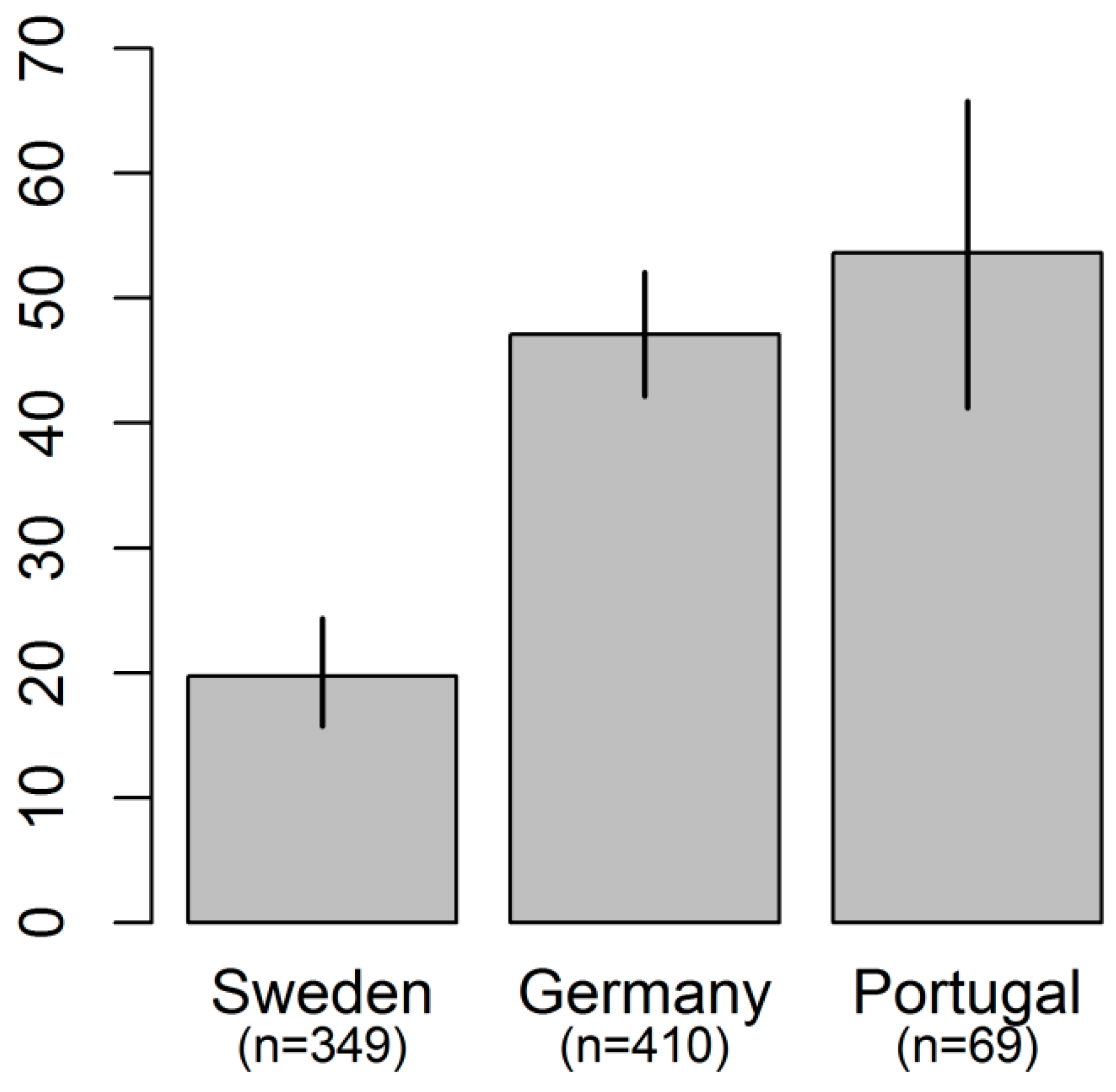



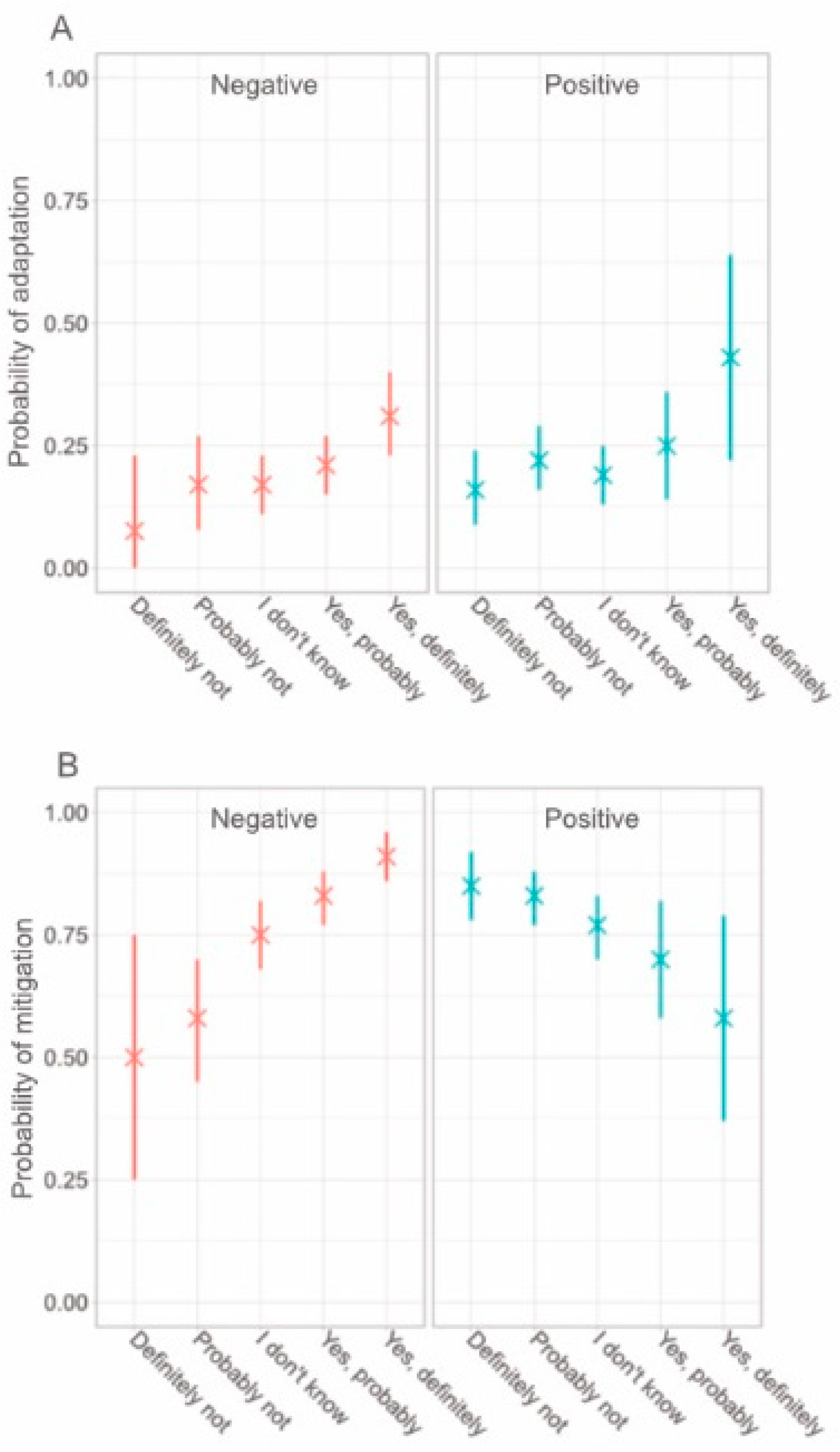
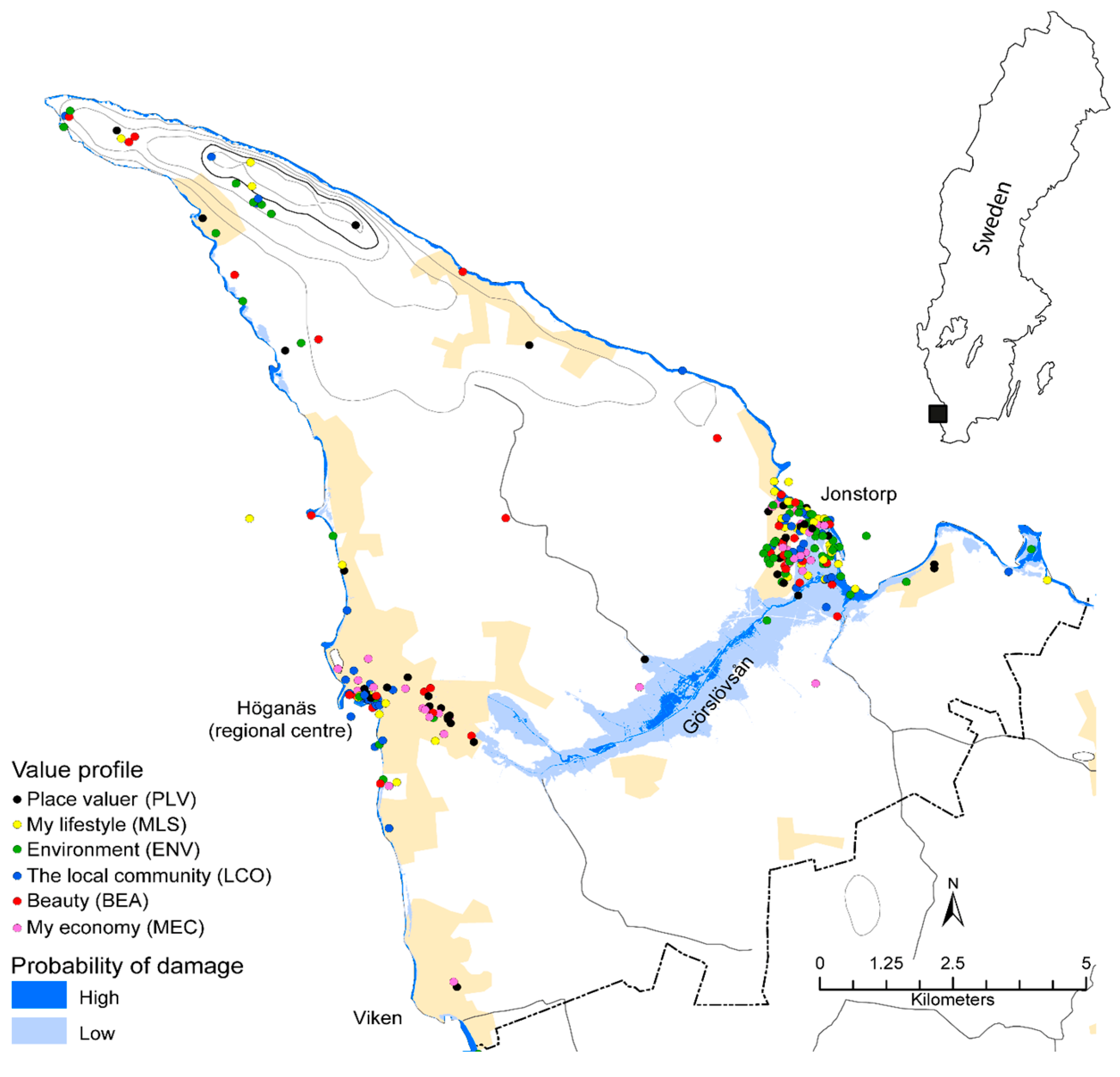
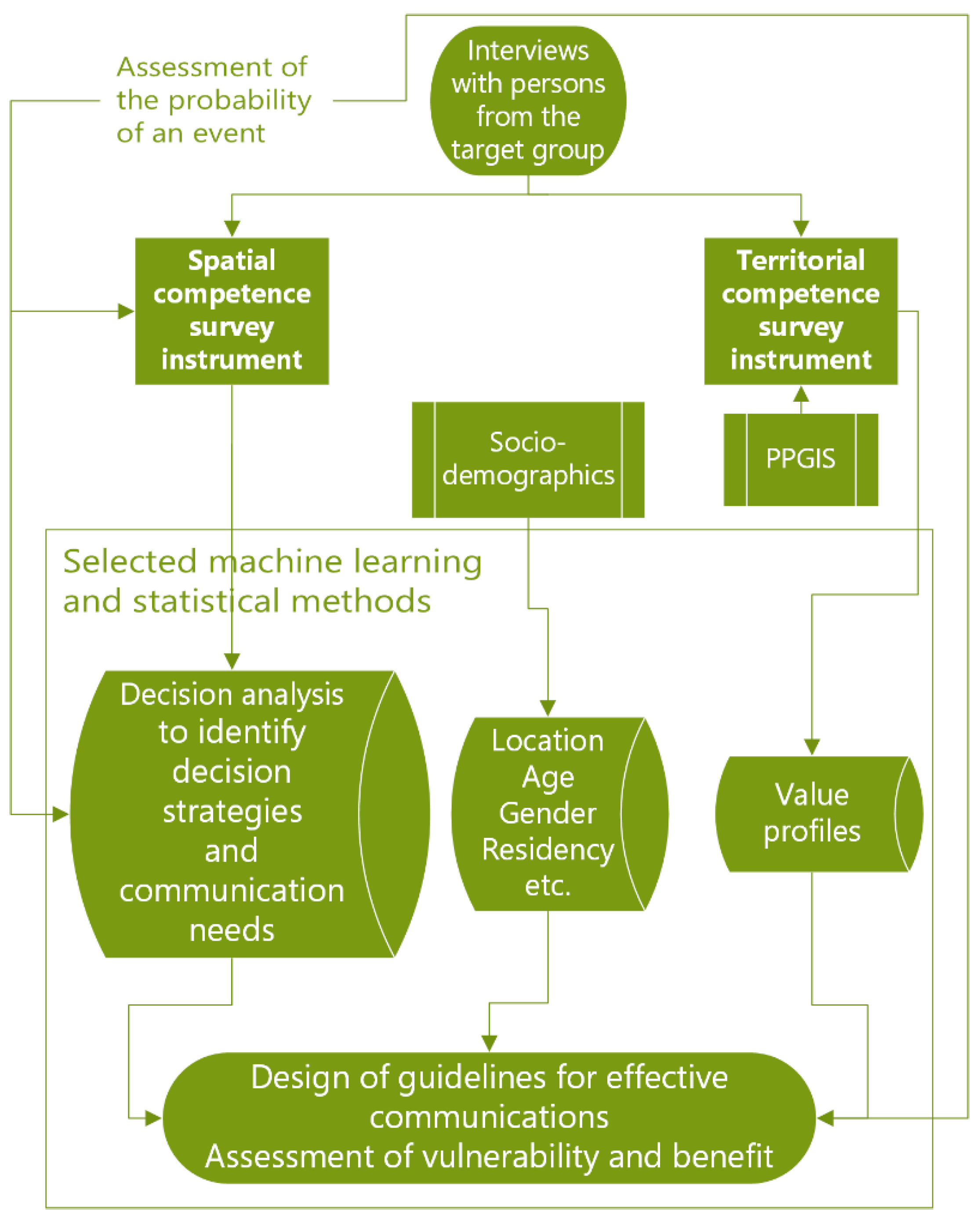

| Individual’s State of Knowledge/Expectation | Distribution | Communications Recommended… |
|---|---|---|
| Weak or uncertain belief in the local impacts of climate change on forests | 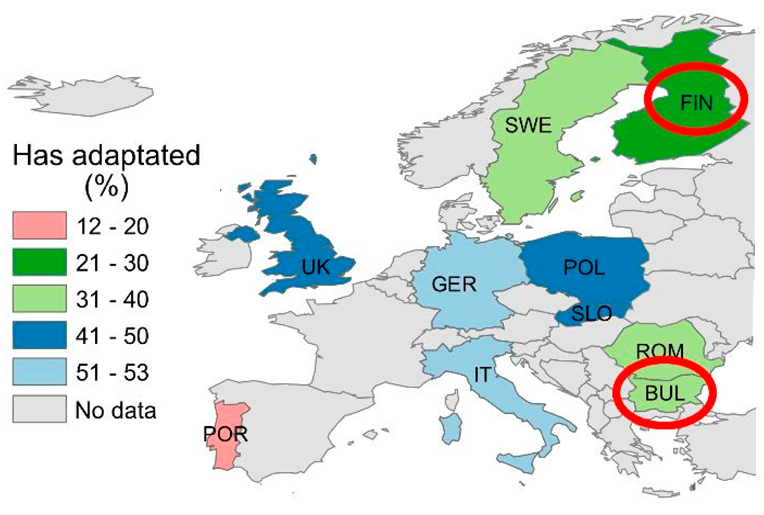 | …on climate change per se and its impacts on the forest |
| Weak belief in having experienced the impacts of climate change |  | …that fortify the subjective attribution of experiences to climate change |
| No or very weak impacts of climate change on the forest expected | 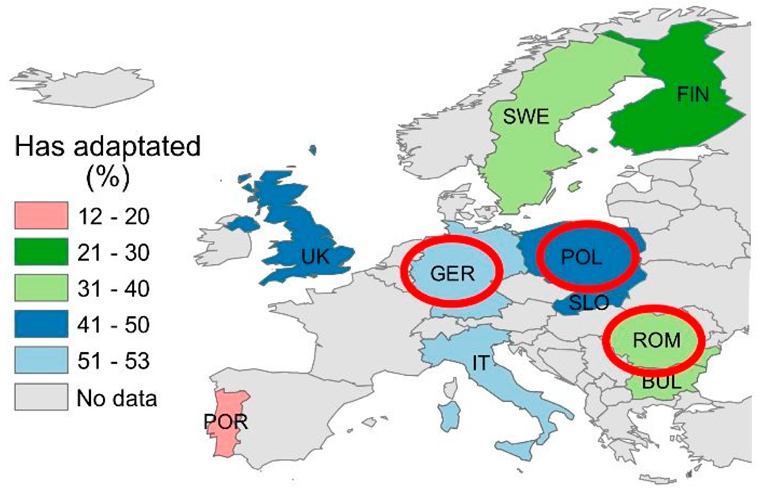 | …on climate change impacts on any forest value object |
| Positive and negative values of specific expected impacts of climate change on the forest that cancelled each other out | …on the impacts of climate change on all objects for which the expected values are weak | |
| Low strength of values of climate change impacts on the forest expected on“Rural livelihood development”, “regulatory ecosystem services”, “biodiversity”, “recreation”, “carbon storage”, “non-timber production” and “hunting” (in yellow) and “return-”, “pulp-”, “timber-” and “energy production” (in red) |  | …on how climate change affects value objects for which the value strength of expected impacts is low |
| High absolute expected net value of specific climate change impacts | …on specific negative impacts of climate change on forests. N.B. These are more likely to instigate forest adaptation of forest professionals across Europe than communications on specific positive climate change impacts | |
| Decision-maker’s tipping point thinking. Moderately negative net values of climate change impacts on forests expected and few effective adaptation measures perceived to be available |  | …on effective measures for climate change adaptation that the decision-making agent can take him- or herself. |
| Moderately negative net values of climate change impacts on forests expected and several effective adaptation measures perceived to be available | 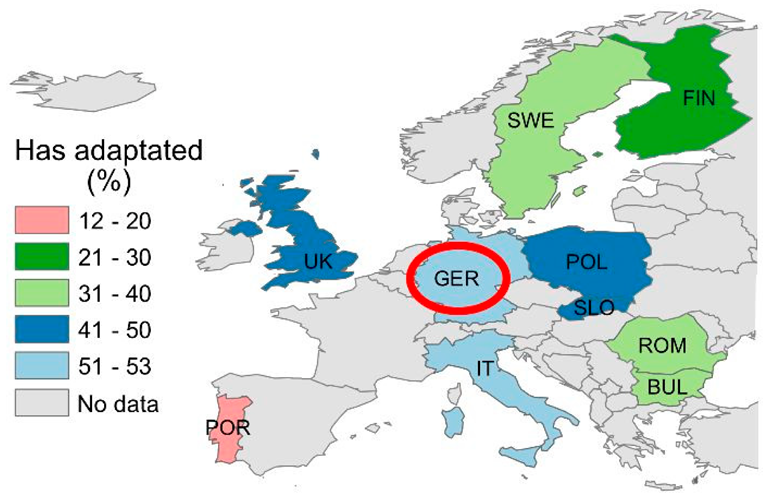 | …on the causal connections between climate change and negative impacts. N.B. Communications on even more effective measures unnecessary as this would reduce the utility the recipients expect from adaptation and thereby reduce their decision-making for climate change adaptation |
| Systemic tipping point thinking | 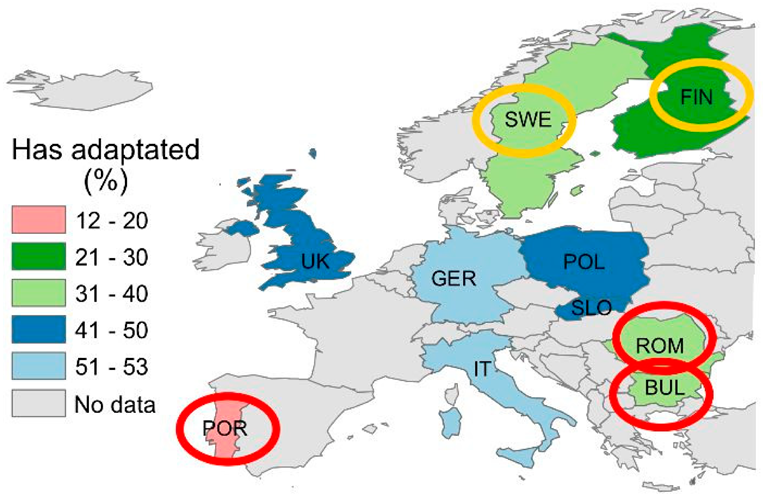 | …on whether or not relevant parts of the earth’s climate system have passed a tipping point. Positive (in yellow) and negative (in red) tipping point thinking |
Publisher’s Note: MDPI stays neutral with regard to jurisdictional claims in published maps and institutional affiliations. |
© 2021 by the authors. Licensee MDPI, Basel, Switzerland. This article is an open access article distributed under the terms and conditions of the Creative Commons Attribution (CC BY) license (https://creativecommons.org/licenses/by/4.0/).
Share and Cite
Blennow, K.; Persson, E.; Persson, J. DeveLoP—A Rationale and Toolbox for Democratic Landscape Planning. Sustainability 2021, 13, 12055. https://doi.org/10.3390/su132112055
Blennow K, Persson E, Persson J. DeveLoP—A Rationale and Toolbox for Democratic Landscape Planning. Sustainability. 2021; 13(21):12055. https://doi.org/10.3390/su132112055
Chicago/Turabian StyleBlennow, Kristina, Erik Persson, and Johannes Persson. 2021. "DeveLoP—A Rationale and Toolbox for Democratic Landscape Planning" Sustainability 13, no. 21: 12055. https://doi.org/10.3390/su132112055
APA StyleBlennow, K., Persson, E., & Persson, J. (2021). DeveLoP—A Rationale and Toolbox for Democratic Landscape Planning. Sustainability, 13(21), 12055. https://doi.org/10.3390/su132112055







